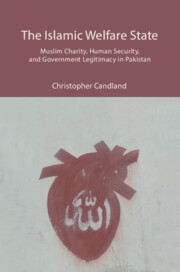Book contents
- Frontmatter
- Dedication
- Contents
- List of Illustrations
- Preface
- Note on Translations and Transliterations
- List of Abbreviations
- Part 1 Introduction
- Part 2 Piety and Public Goods
- Part 3 Pakistan
- Part 4 Charities
- Part 5 Religion, State, and Public Goods
- Afterword
- Acknowledgments
- Appendix: Charities Studied
- Glossary
- References
- Index
10 - State Islamic Charities
Published online by Cambridge University Press: 30 April 2024
- Frontmatter
- Dedication
- Contents
- List of Illustrations
- Preface
- Note on Translations and Transliterations
- List of Abbreviations
- Part 1 Introduction
- Part 2 Piety and Public Goods
- Part 3 Pakistan
- Part 4 Charities
- Part 5 Religion, State, and Public Goods
- Afterword
- Acknowledgments
- Appendix: Charities Studied
- Glossary
- References
- Index
Summary
We must work our destiny in our own way and present to the world an economic system based on the true Islamic concept of equality of manhood and social justice. We will thereby be fulfilling our mission as Muslims and giving to humanity the message of peace, which alone can save it and secure the welfare, happiness, and prosperity of mankind.
—Mohammad Ali Jinnah
Pakistani governments created ‘Islamic’ social welfare institutions and have taken control of traditional institutions. These include the Bait ul Mal as well as the expropriation of awqaf (trusts) and requirements that zakat (annual obligatory charity) be paid to government. The result of government control of traditional Muslim charities, in my assessment, is the encouragement of sectarianism. Madaris, for example, are required by law to register with one of the five seminary boards of the five major masalik (denominations).
This chapter takes up questions that are central to analysis of the impact of a confessional state—wherein one religion is privileged above others—on faith and religious practice, including the practice of charity. How did the Government of Pakistan bring much of the Islamic social welfare sector under state control, and with what effect on the quality of services and accountability of funds? How well have governments performed in administration and management of Islamic charity and social work at traditional religious venues, such as awqaf ? Has nationalization and government management of awqaf funds improved the quality of the welfare activities at awqaf ? Has the government takeover of awqaf made them more accessible to the public? How does government collect and distribute funds from pilgrims at awqaf and from asset holders as zakat? What does government administration of Islamic social welfare associations indicate broadly about a state religion and government legitimacy?
Governments in Pakistan have acted five times, under three different military governments, to confiscate large segments of the Islamic social welfare sector. In 1960, the government of General Ayub Khan nationalized awqaf and many of the dargah (shrines) which depend on awqaf. According to current dargah custodians, former owners of shrines were forced to sign agreements giving possession to provincial government. Awqaf throughout Pakistan are now administered by provincial governments. In its second attempt, the military government of General Ayub Khan sought to bring the madrasah sector under government control, but failed, in West Pakistan.
- Type
- Chapter
- Information
- The Islamic Welfare StateMuslim Charity, Human Security, and Government Legitimacy in Pakistan, pp. 204 - 230Publisher: Cambridge University PressPrint publication year: 2024

